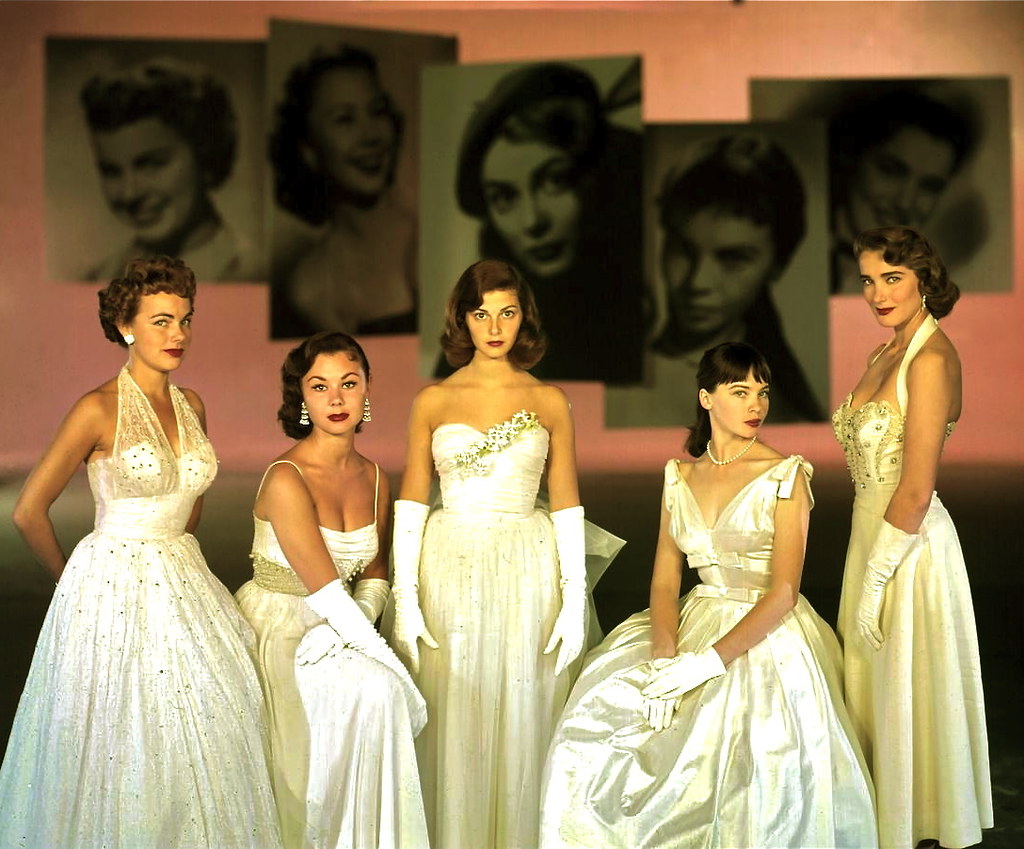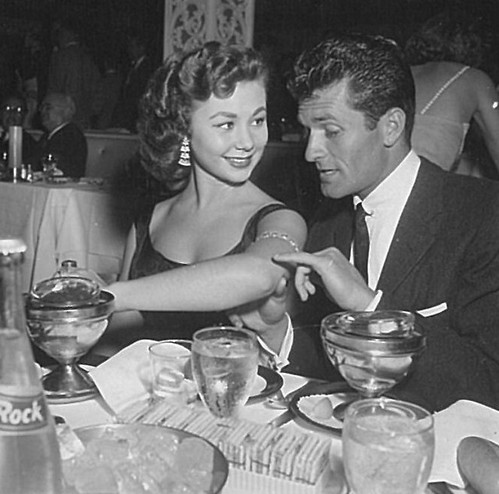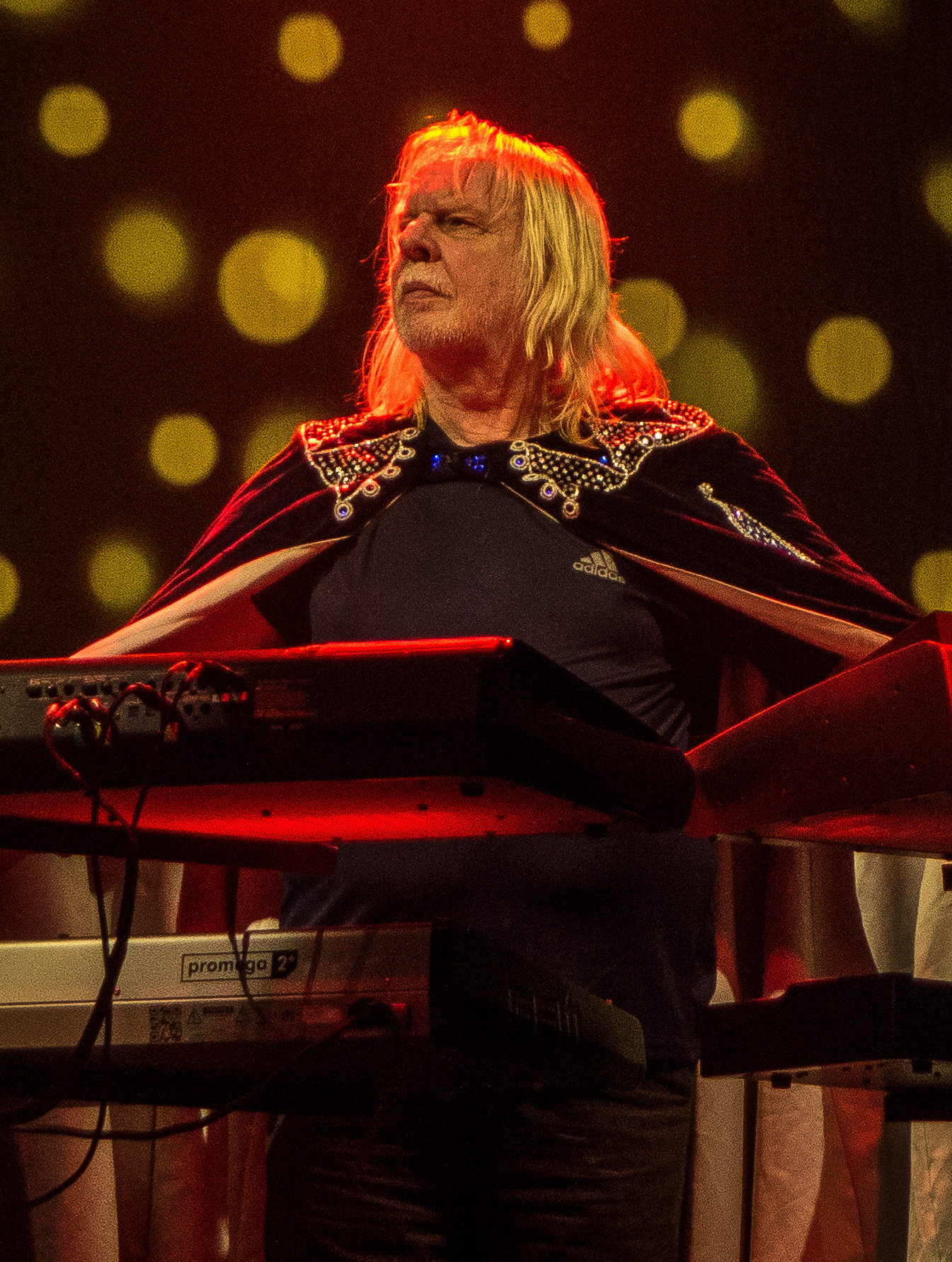
The news of Mitzi Gaynor’s passing at 93 marks the departure of a true luminary from Hollywood’s golden age. An effervescent dancer, singer, and actress, she captivated audiences with her vivacious performances, perhaps most notably as Nellie Forbush in the iconic 1958 film “South Pacific.” Her death, attributed to natural causes in Los Angeles, signifies the end of an era, reminding us of the enduring legacy of stars who shaped American entertainment.
From her early days as a prodigious dance talent to her commanding presence on film and television, Gaynor’s career spanned eight decades, characterized by a unique blend of athleticism, charm, and theatrical flair. Though her film career was relatively brief, she cannily adapted to the changing landscape of show business, becoming a dazzling headliner in Las Vegas and a beloved fixture of Emmy-winning television specials. Her managers, Rene Reyes and Shane Rosamonda, expressed gratitude to her admirers, noting that “Your love, support and appreciation meant so very much to her and was a sustaining gift in her life.”
This article endeavors to trace the remarkable trajectory of Mitzi Gaynor’s life and artistry, offering an in-depth look at the pivotal moments that defined her journey. We will delve into her formative years, her ascent through the competitive ranks of Hollywood, and the defining performances that etched her name into the annals of entertainment history, beginning with her vibrant beginnings and leading to the triumphs that solidified her star power.

1. **Early Life and Beginnings in Dance**Born Francesca Marlene de Czanyi von Gerber in Chicago on September 4, 1931, Mitzi Gaynor’s familial background was intrinsically linked to the performing arts. Her mother was a dancer, and her father, Henry, a Hungarian-born cellist and orchestra conductor. As an only child, she was immersed in artistic expression, a foundation that would shape her remarkable career.
Her formal dance training commenced at the age of eight. The family’s frequent relocations, from Elgin, Illinois, to Detroit and then to Los Angeles when she was eleven, were driven by her commitment to her dance teacher. This move to Southern California proved a crucial step, bringing her closer to the vibrant entertainment industry.
By thirteen, under the name Mitzi Gerber, her precocity and ambition were already evident. She successfully persuaded Edwin Lester, impresario of the Los Angeles Civic Light Opera, that she was sixteen to secure a role in “Song Without Words.” This early theatrical success showcased her undeniable talent and provided valuable stage experience.
Her early engagements quickly diversified. She danced in a comedy bit in a West Coast production of Jerome Kerns’ “Roberta” before joining touring shows like “The Fortune Teller,” known on Broadway as “Gypsy Lady.” She secured her first speaking part as Miss Anders in “Song of Norway.” She also performed as Katie in 1949’s “The Great Waltz,” steadily building her repertoire.
Read more about: Beyond the Starlight: Robert Redford’s Untold Heartbreak and the Women Who Shaped His Life

2. **Discovery by 20th Century Fox and Name Change**The pivotal moment that propelled Mitzi Gerber from regional theater to the cusp of Hollywood stardom occurred during her performance in “The Great Waltz.” A discerning producer from 20th Century Fox spotted her, an encounter that would fundamentally alter her career trajectory. This observation swiftly led to a significant offer.
Following this, she was signed to a coveted contract by studio chief Darryl F. Zanuck, integrating her into the Hollywood system. Zanuck, renowned for his keen eye for talent, recognized in Mitzi Gerber a unique blend of charm, vivacity, and raw ability ideal for the silver screen.
As part of her transformation, studio officials requested a change to her surname. She adopted “Gaynor,” borrowed from silent-film star Janet Gaynor, marking a new professional identity and strategic reinvention. This renaming heralded a new chapter under the studio’s umbrella.
The renaming was more than formality; it signaled the studio’s intent to elevate her profile and integrate her into their glamorous musical talents. Fox aimed to leverage her vibrant personality and dance prowess, positioning her to continue the legacy of beloved screen performers.
Read more about: Robert Redford: An American Icon’s Enduring Legacy as Screen Idol, Visionary Director, and Tireless Activist
3. **Early Film Roles and Being Groomed as a Star**Mitzi Gaynor’s cinematic debut came with “My Blue Heaven” in 1950, a musical drama where she appeared with Betty Grable and Dan Dailey. In this film, Gaynor immediately made an impression, particularly standing out in several memorable send-ups of television commercials. Her fresh appeal and energetic performances signaled a promising Hollywood start.
Recognizing her potential, 20th Century Fox actively groomed her as Betty Grable’s successor, a testament to her appeal in musical genres. This strategic positioning led to a rapid succession of films, designed to build her profile. She appeared in “Take Care of My Little Girl” (1951) and “Golden Girl” (1951), showcasing her versatility.
Her early filmography included “We’re Not Married!” (1952) with Marilyn Monroe, “Bloodhounds of Broadway” (1952), “Down Among the Sheltering Palms” (1953), and “The I Don’t Care Girl” (1953). These diverse projects allowed her to refine her skills beyond musical numbers.
Gaynor had the privilege of working with a constellation of stars. She graced the screen with Ethel Merman, Marilyn Monroe, Donald O’Connor, and Dan Dailey in “There’s No Business Like Show Business” (1954). She later partnered with Bing Crosby in “Anything Goes” (1956) and with Gene Kelly in “Les Girls” (1957). These collaborations elevated her status and provided invaluable experience.
Read more about: Beyond the Marquee: 13 Stars Hollywood Tried to Crown A-List, But Who Never Quite Reached the Top

4. **The Fierce Competition for ‘South Pacific’**In 1957, Mitzi Gaynor faced intense competition for the role of Navy nurse Nellie Forbush in Joshua Logan’s film adaptation of “South Pacific.” This female lead in Rodgers and Hammerstein’s sensational Broadway musical was one of the most coveted roles of the mid-20th century.
The original Broadway star, Mary Martin, was deemed too old—in her 40s—and potentially too strong-voiced for the film. Other prominent actresses, including Doris Day, were considered. Producer Mike Todd even wanted his wife, Elizabeth Taylor, for the part, highlighting the role’s high profile.
Despite being an established actress with a dozen films, Gaynor was the only candidate willing to screen test. She recalled the audition while filming “The Joker Is Wild” with Frank Sinatra. Sinatra, she credited, adjusted schedules to allow her the day off for this crucial opportunity.
She auditioned for Oscar Hammerstein II at the Beverly Hills Hotel ballroom, performing “Honey Bun” and “A Cockeyed Optimist,” humorously adding, “I did everything but strip.” Hammerstein thanked her, calling her “a wonderful sport,” acknowledging her spirited effort in such formidable competition.
Read more about: America’s Defining Eras: A Showdown of 10 Pivotal Moments that Shaped the Nation (And Why They Still Matter)

5. **The Triumph of ‘South Pacific’ and its Impact**Mitzi Gaynor’s successful audition culminated in her securing the iconic role of Nellie Forbush, a part she infused with her signature vitality. Her performance in the 1958 film “South Pacific” became the most recognized and enduring role of her career, forever linking her to the beloved musical.
In the film, Gaynor famously delivered powerful renditions of “I’m Gonna Wash That Man Right Outa My Hair” and “Some Enchanted Evening.” Her ability to perform her own singing was a distinctive highlight, setting her apart. She was “the only one of the film’s stars to do her own singing,” a testament to her vocal prowess.
The exotic World War II-set musical became an immense box-office success, emerging as the “third highest-grossing movie ($17.5 million, or $196 million today)” of its year. The film earned three Academy Award nominations, including Best Sound, further cementing its critical and commercial success.
Her compelling portrayal of Nellie Forbush garnered significant critical acclaim, with her performance being “well received.” She received a Golden Globe nomination for Best Actress in a Comedy or Musical. This underscored her ability to carry a major motion picture, solidifying her status as a leading lady.
Read more about: Beyond the Limelight: 15 Celebrities Who Bravely Served in the Vietnam War

6. **Transition from Hollywood as Musicals Faded**Despite the immense success of “South Pacific,” Mitzi Gaynor’s primary film career concluded surprisingly swiftly. Following her defining role, she appeared in only “three more films, all comedies without music,” indicating a broader industry shift and changing role offers.
Her last noteworthy film appearance was in Stanley Donen’s “Surprise Package” (1960) with Yul Brenner. She retired from movies after just one more film, the Kirk Douglas-starring “For Love or Money” (1963). At this point, Gaynor was still in her early 30s, making her departure from the silver screen particularly notable.
Gaynor articulated her departure with candor: “I quit films because they quit me.” She observed, “Marilyn Monroe was now the new Alice Faye/Betty Grable, she was doing the musicals at Fox.” With the specific roles she desired no longer available, she concluded, “there was nothing for me to do.”
This period coincided with the gradual fading of the traditional Hollywood musical. Recognizing this trend, Gaynor, in partnership with her astute husband and manager, Jack Bean, strategically pivoted her career. This foresight enabled her to explore new avenues, laying groundwork for her next illustrious chapters in Las Vegas and television.
Read more about: Remember the ’60s? 12 Iconic Stars Who Dared to Ditch Hollywood for Truly Unexpected Lives
7. **The Dazzling Era of Las Vegas Stardom**Following the conclusion of her primary film career, a period marked by the fading of traditional Hollywood musicals, Mitzi Gaynor, guided by her husband and manager, Jack Bean, executed a strategic and successful pivot to the vibrant entertainment landscape of Las Vegas. This move represented a comprehensive artistic reinvention, showcasing Gaynor’s adaptability and keen understanding of industry shifts. She recognized that live performance offered a dynamic new stage for her blend of singing, dancing, and acting, fostering direct audience connection film roles no longer provided.
Commencing in 1961, Gaynor rapidly ascended to become a premier headliner in Las Vegas, commanding stages with a vivacity that captivated audiences. Her shows were elaborate spectacles, meticulously choreographed and featuring dazzling, often sequined, costumes designed by the legendary Bob Mackie. These productions expertly highlighted her athletic dance prowess, expressive vocal range, and comedic timing, creating an immersive experience that was both glamorous and deeply entertaining. Supported by talented male dancers, Gaynor defined a signature style synonymous with high-caliber Vegas showmanship.
The public’s enthusiastic embrace of Gaynor’s Las Vegas act quickly translated into significant commercial success. By 1968, her drawing power was so formidable that she was reportedly earning an astonishing $45,000 per week, underscoring her top-tier performer status. Beyond her earnings, Gaynor, with Bean’s counsel, demonstrated shrewd business acumen, notably acquiring a financial stake in the Flamingo Hotel. This investment fortified her financial future and solidified her position as an influential figure within the Las Vegas entertainment industry, elevating her beyond performer to entrepreneur.
Read more about: When the Spotlight Faded: The Shocking Stories of 14 Iconic Female Stars Blacklisted in Hollywood
8. **Television Triumphs and Emmy Recognition**Parallel to her thriving Las Vegas career, Mitzi Gaynor adeptly transitioned into television, a medium that proved an expansive and receptive platform for her distinctive showmanship. Her initial major foray was the critically acclaimed NBC special “Mitzi,” broadcast in 1968. This production offered a national audience a dazzling demonstration of her multifaceted theatrical flair, featuring elaborate musical numbers and charismatic interactions that highlighted her boundless energy. These specials swiftly became an integral component of her post-Hollywood identity, extending her reach to millions of viewers.
The success of “Mitzi” established a trajectory for an extraordinary decade-long series of annual specials for CBS, commencing in 1973. Each year, Gaynor would headline these meticulously produced variety shows, which rapidly became highly anticipated television events. Renowned for opulent sets, innovative choreography, and Gaynor’s unflaggingly vivacious performances, titles like “Mitzi and a Hundred Guys,” “Mitzi … A Tribute to the American Housewife,” “Mitzi … Zings Into Spring,” and “Mitzi … What’s Hot, What’s Not” reflected the sophisticated and thematic nature of these ambitious productions, cementing her status as a variety television queen.
Despite the popularity of her specials and consistent offers for a weekly network variety series, Gaynor steadfastly refused. Her decision was rooted in sagacious advice from Gene Kelly, who famously counseled her to “Only do event television.” This discerning choice proved instrumental in maintaining the exceptional quality and impact of each television appearance, preventing overexposure and consistently delivering the high production values and fresh content her audience cherished.
Her unwavering commitment to these visually stunning television spectacles, critically lauded and immensely popular, eventually culminated in a significant industry accolade. Mitzi Gaynor received a well-deserved Emmy Award in 2008 for her acclaimed PBS special, “Mitzi Gaynor: Razzle Dazzle! The Special Years.” This recognition served as a poignant tribute to her enduring artistic brilliance and indelible contributions to the cherished genre of television variety programming, solidifying her legacy in a new medium.
Read more about: Kathryn: A Name Forged in Purity, Echoing Through Illustrious Careers and Enduring Legacies

9. **Enduring Artistic Collaborations: Bob Mackie’s Beginnings**A visually defining aspect of Mitzi Gaynor’s resplendent stage and television persona was her indelible collaboration with costume designer, Bob Mackie. This partnership, initiated under serendipitous circumstances in 1966, evolved into a creative alliance that not only defined Gaynor’s visual aesthetic but also played a crucial role in propelling Mackie into the upper echelons of celebrated designers. The garments crafted by Mackie were more than mere attire; they were meticulously engineered extensions of her dynamic performances, enhancing every movement with an inimitable blend of sparkle, glamour, and dramatic flair.
The genesis of this renowned artistic bond can be traced to a Danny Thomas TV special, where Gaynor was profoundly impressed by innovative sketches presented by Ray Aghayan. Captivated by his vision, she immediately desired Aghayan to design for her next show. However, due to Aghayan’s existing commitments with Judy Garland, he thoughtfully suggested his creative partner, Bob Mackie, as an alternative. This recommendation proved a pivotal moment for both artists, setting the stage for a legendary collaboration.
Mackie, then a promising but emerging talent, seized this significant opportunity with enthusiasm, and Mitzi Gaynor became his very first celebrity client. This initial engagement swiftly blossomed into a long-standing and exceptionally fruitful partnership that spanned Gaynor’s entire illustrious career in Las Vegas and her acclaimed television specials. The intricate, often audacious, and always dazzling costumes Mackie conceived for Gaynor became intrinsically linked to her performances, transforming her into an unforgettable visual spectacle and cementing their joint legacy in entertainment fashion.

10. **Unforgettable Academy Awards Performances**Beyond her celebrated film roles and television specials, Mitzi Gaynor cultivated another distinctive niche through her captivating appearances on the Academy Awards stage. These performances were not merely ceremonial; they were electrifying showcases of her extraordinary versatility and inherent ability to command a live audience, frequently eliciting ovations that “brought down the house.” Such appearances underscored her status as a consummate entertainer, whose star power transcended the need for a specific film nomination.
Throughout her career, Gaynor delivered several truly memorable performances at the prestigious annual ceremony. In 1954, she shared a vibrant musical moment with host Donald O’Connor for a lively rendition of “The Moon Is Blue,” demonstrating her natural chemistry. Five years later, during the 1959 broadcast, she famously performed Irving Berlin’s classic “There’s No Business Like Show Business” repeatedly, improvising with infectious energy when the live show unexpectedly ran short. This impromptu display highlighted her quick wit, adaptability, and unwavering stage presence.
Perhaps her most iconic Oscar moment arrived in 1967 with her show-stopping performance of the Oscar-nominated song “Georgy Girl.” This appearance was a masterclass in dynamic showmanship and theatrical artistry. It featured complex choreography, a supporting ensemble of four impeccably dressed male backup dancers, and a dramatic, seamless costume change that astonished and delighted the audience. This performance left an indelible impression on viewers and critics alike, permanently solidifying her reputation as an unparalleled and bold live performer.
Read more about: The Ultimate Reality Check: 15 Overrated Blockbusters That Made an Absolute Fortune

11. **The Ed Sullivan Show and The Beatles**In February 1964, Mitzi Gaynor occupied a unique, albeit ironic, position at the epicenter of a global cultural phenomenon. On the broadcast of “The Ed Sullivan Show” from a Miami hotel on February 16, she was accorded coveted top billing, a clear testament to her established stardom. For her segment, she delivered a spirited and polished performance, including “It’s Too Darn Hot” and a medley of blues songs, intending to captivate the massive national television audience.
Yet, the evening’s broadcast, watched by an astonishing 70 million viewers, would ultimately be enshrined in memory not for her act, but for the indelible second American television appearance of The Beatles. Despite Gaynor’s vibrant presence and quality performance, the surging “Fab Four” inadvertently overshadowed her. This momentous event highlighted a dramatic shift in entertainment tastes and underscored a clear generational divide, marking a pivotal moment in the transition of musical eras.
Notwithstanding the unintentional overshadowing, Gaynor’s personal recollections were consistently marked by good humor and memorable, charmingly mundane, behind-the-scenes anecdotes. She recounted, for instance, how the young British musicians, during rehearsals, politely approached her to ask if they might borrow her hair dryer—a delightfully ordinary interaction contrasting with burgeoning Beatlemania. Later, at a cast dinner, Paul McCartney, recognizing her stature, graciously requested her autograph, a gesture speaking to mutual respect despite their differing fame that evening.
This iconic appearance, while not her most triumphant in individual spotlight, nevertheless positioned Mitzi Gaynor squarely within the narrative of a profoundly pivotal moment in 20th-century popular culture. It served as a unique testament to her long and adaptable career, demonstrating her ability to intersect with and even precede various transformative entertainment eras, solidifying her enduring presence as new legends were forged and cultural landscapes reshaped.
Read more about: Flashback! 14 Mind-Blowing Celebrity Photos That Forever Changed Pop Culture History
12. **Personal Life, Philosophy, and Lasting Legacy**Central to Mitzi Gaynor’s personal narrative was her deep and enduring partnership with her husband and manager, Jack Bean. Their marriage, commencing in 1954, was a profound cornerstone of her adult life and professional journey, with Bean playing an indispensable role in guiding her shrewd strategic career shifts and managing her multifaceted endeavors. Their union, enduring for over five decades until Bean’s death in 2006, was a rare example of Hollywood longevity. Notably, the couple chose not to have children, focusing energies on their shared professional and personal lives.
Beyond her marital stability, Gaynor’s life was also peppered with intriguing anecdotes offering glimpses into her independent spirit and resilience. She famously shared stories of dating the enigmatic tycoon Howard Hughes for approximately eight months, concluding when she was 19 after she astutely discovered he had proposed marriage to “400 other girls.” A testament to her sharp instincts, Hughes once advised her to acquire “some dirt” in Las Vegas; she followed his counsel, purchasing land for $25 an acre, which she later sold for a staggering “two million bucks,” a savvy financial maneuver that underscored her intelligence beyond the stage.
Even in her advanced years, Gaynor maintained a vibrant engagement with her rich legacy and the broader entertainment community. Her contributions were recognized in September 2022, when she received a prestigious Legacy Award from the Cinecon Classic Film Festival in Hollywood, a fitting acknowledgment of her enduring impact. Demonstrating unflagging spirit and remarkable vitality, she made a triumphant return to the New York stage, making her nightclub debut at 78 in 2010 with a show titled “Razzle Dazzle! My Life Behind the Sequins” at Feinstein’s Cabaret, proving that her star power remained undiminished.
Gaynor’s philosophical outlook on life and aging was consistently characterized by refreshing candor, unwavering optimism, and a delightful sense of humor. When queried about the “secret to aging gracefully,” she shared a simple yet profound insight with The Chicago Sun-Times in 2013, stating, “Just have a good attitude. Enjoy who you are. Remember that life is a wonderful thing.” Yet, with characteristic wit, she playfully added, “I’d kill to be 50,” perfectly encapsulating her blend of acquired wisdom and enduring vivacity. She also expressed gratitude for never “had to work with a stinker,” a charmingly positive reflection on her myriad collaborations.
The passing of Mitzi Gaynor at 93 marked the poignant conclusion of a remarkable era, signaling the departure of a performer who truly embodied the “razzle-dazzle” spirit of American entertainment. Her managers eloquently articulated that her “creative legacy will endure through her many magical performances captured on film and video, through her recordings.” In a final gesture, they encouraged admirers to honor her memory by making donations to the Entertainment Community Fund and The Great American Songbook Foundation, ensuring her profound impact and benevolent spirit would continue to benefit future generations of artists.
Read more about: Performance Over Perception: 10 Cars That Don’t Deserve Their Bad Reputations
Mitzi Gaynor’s journey, from a prodigiously talented child dancer to a commanding figure on screen, stage, and television, serves as an inspiring testament to adaptability, resilience, and an unwavering commitment to the joy of performance. Her legacy is etched not only in the unforgettable characters she brought to life but also in the vibrant, razzle-dazzle spirit she infused into every endeavor, a spirit that will continue to resonate for generations to come. She was, until her last days, a true “cockeyed optimist,” a beacon of light and laughter in the grand tradition of American entertainment.







